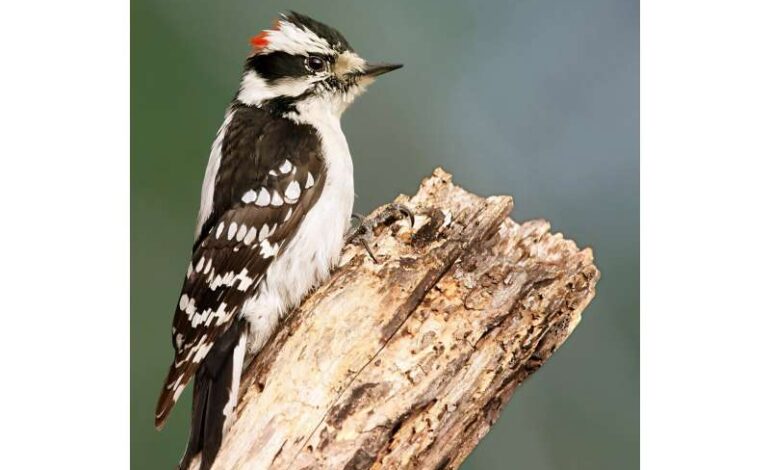Woodpeckers Evolve Unique Drilling Technique to Maximize Power

Research published in the Journal of Experimental Biology reveals that woodpeckers exhibit remarkable adaptations that allow them to use their bodies as powerful drilling tools. The study, conducted by a team of researchers from Brown University and the University of Münster, highlights how these birds brace their bodies to withstand the tremendous forces experienced during drilling, which can reach decelerations of up to 400g.
To understand the mechanics behind woodpecker drilling, the research team, including scientists such as Nicholas Antonson and Matthew Fuxjager, observed eight wild downy woodpeckers over a three-day period. They used high-speed video to capture the birds as they drilled into hardwood, identifying the specific muscle groups engaged during the process. The researchers also recorded electrical signals from various muscle groups, including those in the head, neck, abdomen, and tail, to analyze their contractions during drilling.
The findings revealed that when woodpeckers strike wood, they brace their bodies much like athletes preparing for a powerful movement. The hip flexor and front neck muscles play critical roles in driving the beak into the wood, while additional muscles stabilize the body. According to Antonson, the birds exhibit a coordinated effort where they tilt their heads backward and engage specific muscles at the base of the skull to absorb the impact effectively.
In addition to their impressive physical adaptations, woodpeckers have developed a unique breathing pattern that coincides with their drilling actions. The birds exhale forcefully at the moment of impact, akin to the grunting sound made by tennis players to stabilize their core during a shot. This synchronization of breath and movement enhances the efficiency of their drilling technique.
The research team found that woodpeckers adjusted the intensity of their strikes based on the task at hand. When drilling into hard wood, the front hip flexor muscles contracted more vigorously to generate a stronger impact. Conversely, when tapping softly, the contraction eased, allowing the birds to communicate without the need for excessive force.
The study also highlighted that woodpeckers can strike at rates of up to 13 strikes per second, inhaling briefly between taps. This remarkable coordination allows them to maintain high levels of activity without compromising their drilling effectiveness.
Overall, the research underscores the complex neuromuscular coordination that enables woodpeckers to drill with precision and power. The insights gained from this study may not only deepen our understanding of avian mechanics but could also inspire future innovations in engineering and design.
For further details, the full study is available in the Journal of Experimental Biology, with publication dated November 6, 2025.






